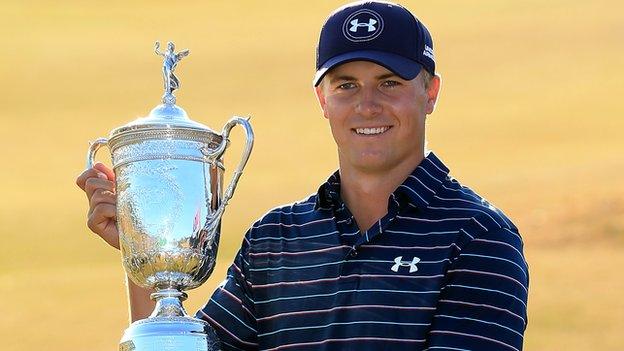David Coulthard column: Rosberg has beating of Hamilton
- Published
Nico Rosberg drove as good a race as I have ever seen from him to win the Austrian Grand Prix on Sunday.
He had the upper hand over his Mercedes team-mate Lewis Hamilton all weekend, and I think that's why Hamilton was a little deflated after qualifying.
Pole position is pole position, but Hamilton knew he was not able to match Rosberg, especially in the middle sector of the lap, seemingly all weekend and that is something he is not used to.
When Hamilton is confident, he delivers great performances. Take the wind out of his sails slightly and he goes into a sort of dead-calm scenario. He either has a strong wind or no wind at all.
Rosberg's weekend, through practice, qualifying and race, was the performance of a world champion. He did everything he needed to do to confirm to people, and I'm sure to himself, that he has the beating of Hamilton.
However, he has not delivered that consistently in the time they have been team-mates at Mercedes.
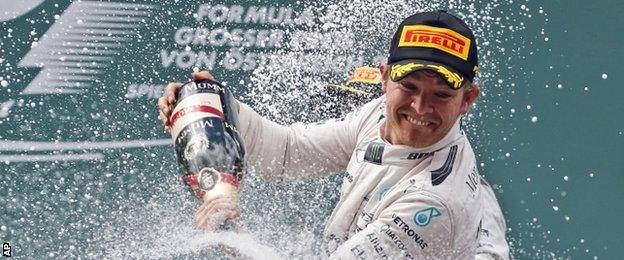
Lewis Hamilton's lead in the championship is now down to 10 points over Nico Rosberg
If Rosberg can replicate it for the remainder of the season, we have one hell of a world championship battle on our hands.
It seems to me that a greater part of Hamilton's performances come from pure natural talent than Rosberg's, and equally that Rosberg is more of a worker. At least that is the impression each gives to the outside world.
If Rosberg can deliver performances like that consistently, his work ethic will make life difficult for Hamilton.
Rosberg said after the race that he knew at the end of last season that he had to work on his racecraft, after coming off second best a few times to Hamilton.
In Austria, he only had to race Hamilton for half a lap, but he did it very well.
He converted second place on the grid into a lead at Turn One. He had to defend into Turn Two and into Turn Three, and it would have been easy in the circumstances to do what he did, for example, in Sochi last year, where he massively got it wrong having made a good start and locked up and went wide.
At the time, that mistake seemed to confirm that he was not able to take wheel-to-wheel racing to Hamilton. But in Austria he really did.
Whether that was because Hamilton was already a bit on the back foot, we will never know.
But, pole lap notwithstanding, if Hamilton was not quite happy with his car in one way or another, there is not a lot you can change between qualifying and race - it is limited to front wing, differential and tyre pressures. And there are some problems that they will not solve.
Having seen Rosberg step up a level in Austria, I am now intrigued to see whether he can keep it up and repeat it at the next race, the British Grand Prix at Silverstone.
If he does, that will be impressive and it is really going to bring this championship to life. But right now there has to be a question mark about that.
Silverstone is a very different track from Austria. There are a couple of medium to high-speed corners at the Red Bull Ring, but fundamentally it's a little go-kart track.
Silverstone is something else again. It is one of the great tests of a driver - Copse, Becketts, a long lap, the home crowd for Hamilton, the expectation of the Mercedes factory at nearby Brackley. It is a real opportunity for Rosberg to make a big impression.
He has talked before about how he would like to have a better connection with the British public, but has tended to favour and promote his Germanness.
The British fans are very much like British mechanics - they love any driver who drives the wheels off a car. They're not especially nationalistic and will not only support Brits. If Nico delivers Austria-level performances at all the grands prix, he will be revered as a driver as much as Hamilton is.
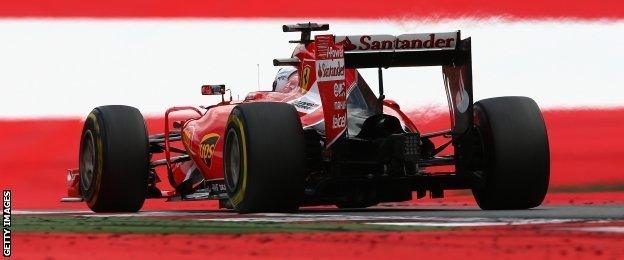
Sebastian Vettel finished the Austrian Grand Prix in fourth
Ferrari challenge fizzles out
On Friday in Austria, there was some excitement because Ferrari looked genuinely quick and there was the expectation that they could take the race to Mercedes.
Even Mercedes thought that might be the case. I was speaking to their technical boss Paddy Lowe on Sunday morning and he said that Ferrari's race pace was quicker than theirs during testing on Friday, and that there had been no difference in fuel loads.
But in the race it just did not translate and Sebastian Vettel was left behind by Rosberg and Hamilton and ended up losing a battle for third with Felipe Massa's Williams after being delayed by a problem with a wheel nut at his pit stop.
Perhaps that was related to a different track temperature that meant the Ferrari was not able to work its tyres as well; perhaps Mercedes run their engines at a lower setting on Friday than Ferrari do in relation to their qualifying/race level.
Whatever, it suggests Ferrari still have some work to do on their car to be able to challenge Mercedes for race wins.
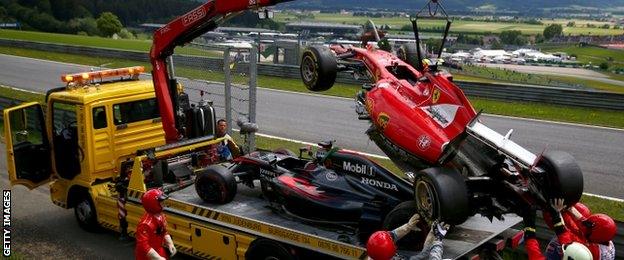
Kimi Raikkonen of Finland and Ferrari crashed with Fernando Alonso of Spain and McLaren Honda
Raikkonen has a problem
At the start of this season, there was a sense that Kimi Raikkonen might have a better year than he did in 2014, when he was nowhere against his former Ferrari team-mate Fernando Alonso.
He started this year looking a bit better. Sebastian Vettel, Alonso's replacement, was still consistently beating Raikkonen in qualifying but other than on that one lap on Saturday afternoons there was very little to choose between them.
But right now Raikkonen has lost all that momentum and he hit a new low on Sunday when he lost his car on the first lap and smashed into Alonso's McLaren, triggering a very nasty-looking crash, with Alonso's car ending up on top of Raikkonen's.
It is very strange to see an accident like that - Raikkonen was in a pretty high gear when he lost it.
But one thing I know from driving last year's Williams car is that these new turbo hybrid engines produce massive amounts of torque, and keeping that under control is no easy matter.
When I was a driver, my throttle pedal travel was routinely about 30-40mm. These days, it is more like 60mm, to give you more facility to control all that torque.
I don't know whether Raikkonen had a moment of brain fade and the torque came in too fast, but it does not look good coming two weeks after losing third place in Canada with another spin, again caused by a boost of power from the engine, although with much less severe consequences.
We have seen a few tank slapper-type incidents, more than in the past, and I suspect that is to do with the behaviour of the Pirelli tyres.
It could be something to do with the tyre sidewalls, in that if a driver builds up some momentum and torque in the tyre, it looks like the unloading from one side flicks the car to the other. Certainly, I don't remember really seeing it in my time, or watching it happen before.
Whatever caused the incident, it is not something you would expect from someone with Raikkonen's experience.
Had Alonso not been there, we have to assume Raikkonen would have lifted out of the power and got away with it. But Alonso was there, and the result was a lot of damage to both cars.
Right now, there are inevitably questions about Raikkonen's future at Ferrari as a result of his on-track performances.
I can't judge the marketing side of things - there may be something about his rebellious personality that they feel really works for them.
But if there is no marketing aspect to it, at the moment it is difficult to see what Raikkonen offers over someone such as, for example, Nico Hulkenberg, who is delivering great results for Force India, is cheaper and has more time ahead of him in F1.
David Coulthard was talking to BBC Sport's Andrew Benson.
- Published22 June 2015

- Published22 June 2015
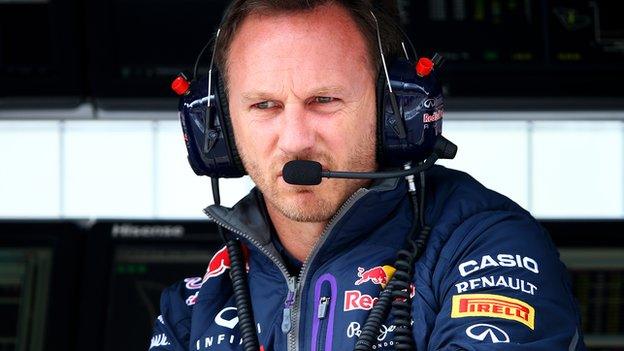
- Published22 June 2015
